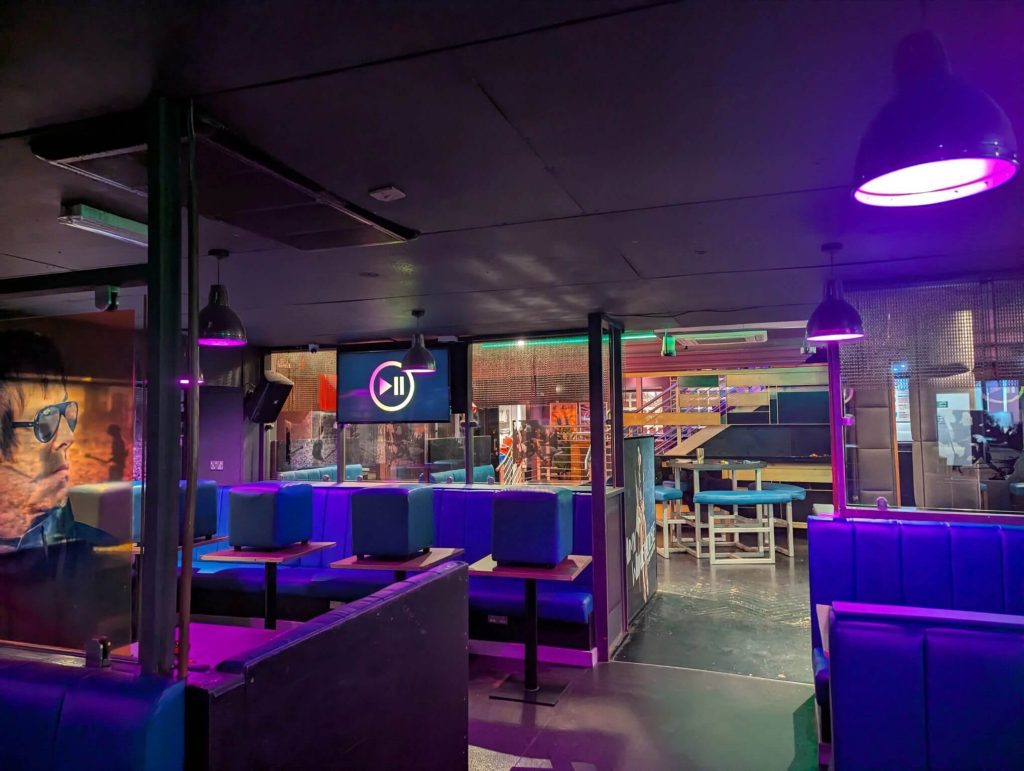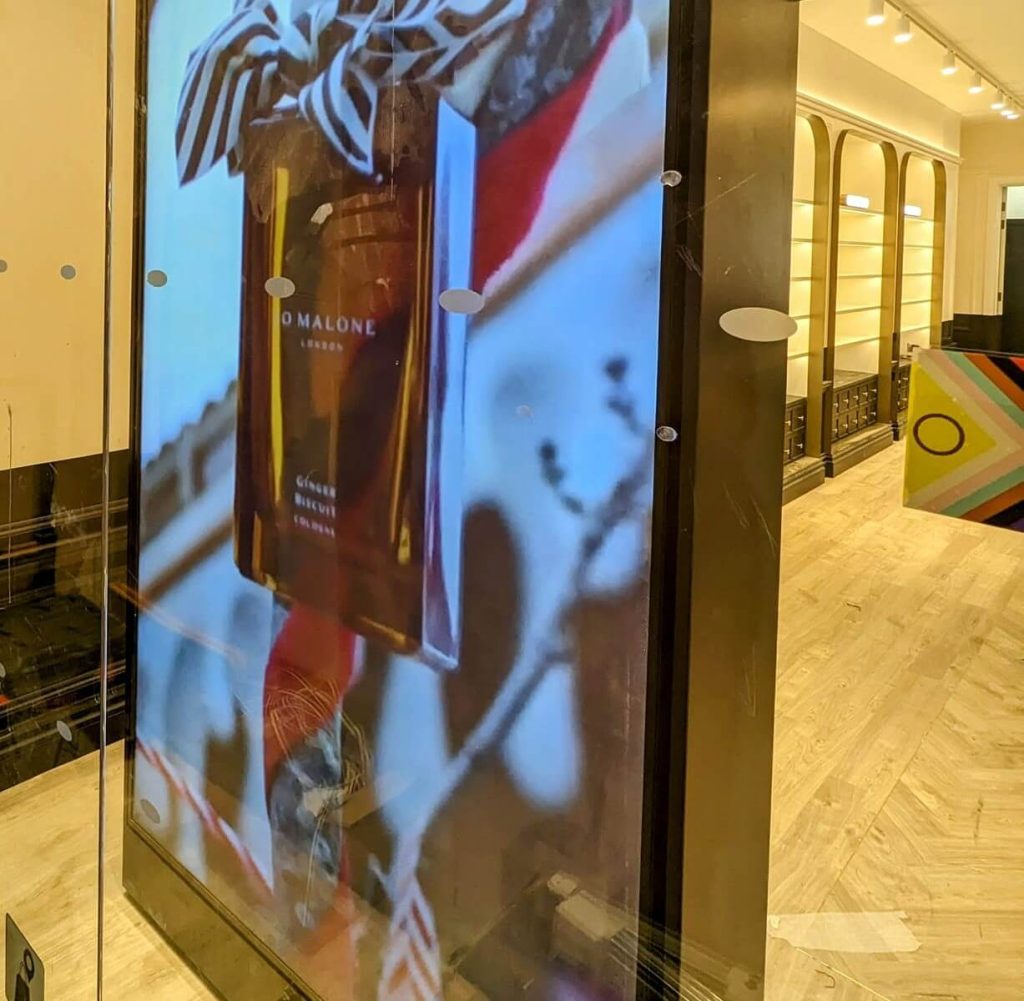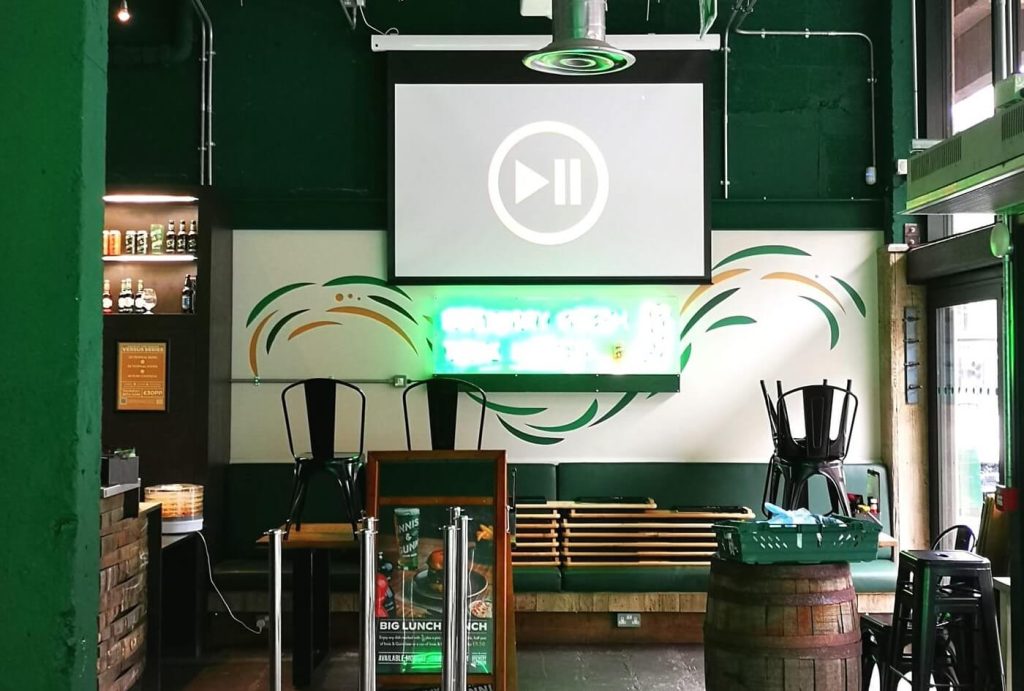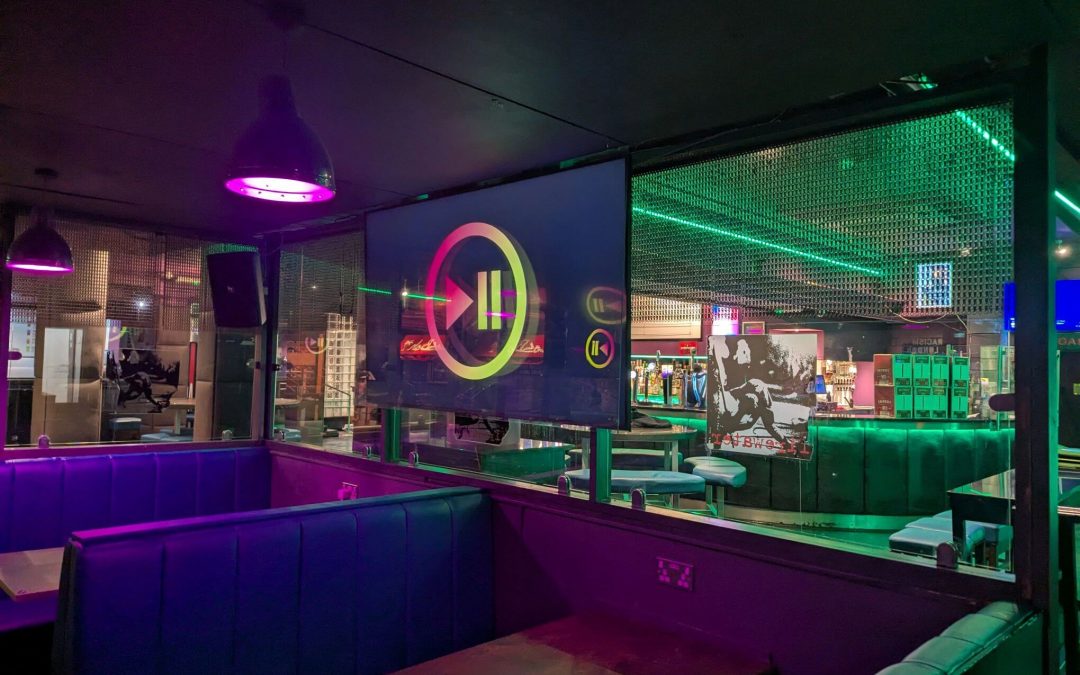In today’s connected world, audio visual technology plays a central role in how we work, communicate, and experience spaces, whether it’s in offices, schools, retail environments or homes. From digital signage and sound systems to fully integrated smart buildings, the demand for reliable AV solutions has never been greater.
According to AVIXA’s Industry Outlook, the UK AV market is projected to grow by over 5.4% annually, with corporate, education and live events being the biggest drivers of growth. Yet, many clients still ask the same question:
What’s the difference between AV installation and AV integration?
At DN Audio, we hear this all the time. And it’s a crucial distinction. Choosing between installation and integration can affect your budget, user experience, and long-term system performance.
In this blog, we break down exactly what these terms mean, how the processes differ, who does what, and how to choose the right approach for your space.

What is AV Installation?
AV installation refers to the physical setup of audio visual equipment. This involves mounting screens, connecting audio cables, installing speakers, projectors, control panels, and more, all the hands-on work required to make the hardware operational.
AV installation is commonly required for:
- Home AV installations
- Conference room AV installation
- Commercial AV installations
- Sound system installation
- Setting up digital signage or TVs in public or retail spaces
Whether it’s a simple home cinema system or a multi-zone commercial AV environment, AV installation companies ensure all the tech is correctly installed, secured, and ready to power on.
Key Components Typically Installed:
- Displays (LED, LCD, projectors)
- Audio systems (amplifiers, microphones, speakers)
- Control systems (touch panels, remotes)
- Video conferencing gear
- Network connections and structured cabling
- Power management and security interfaces
But installation is just the first step.
What is AV Integration?
AV integration takes things a step further, or rather, several steps further.
While AV installation focuses on physically placing and wiring up the gear, AV integration involves connecting, programming, and customising that equipment into a seamless, unified system.
This includes:
- Designing how different technologies interact
- Programming automation and control systems
- Creating user interfaces that are easy to operate
Ensuring all parts, audio, video, control, lighting, even alarm systems, function as one intelligent ecosystem
In short, AV integration is where the magic happens. It’s the difference between having lots of good tech and having a smart, intuitive audio-video integrated system that truly supports your needs.
The AV Installation Process
For most audio visual contractors, the AV installation process follows a structured sequence:
- Site Visit & Consultation: A professional audio visual installer will assess the space, take measurements, and discuss your needs, whether it’s for a sound system installation in a bar or conference room AV installation in an office.
- Equipment Selection: Based on the requirements, the installer will recommend suitable AV equipment, from screens and speakers to control panels and audio cables.
- Hardware Setup: This includes securely mounting displays, running cables discreetly, positioning speakers, and installing any hardware needed.
- System Testing: Once everything is in place, the system is powered on and tested for functionality, ensuring picture and sound quality are optimal.
- Basic Training or Handover: You’ll be shown how to use the system at a basic level.
This process is ideal for straightforward setups where you don’t need multiple systems to work together or don’t require extensive customisation.
The Process of AV Integration
On the other hand, AV integration services are more complex and typically delivered by an AV integration company with experience in system design and software integration. Here’s how it usually works:
- In-depth AV Consultation: Unlike basic installations, integration starts with a deep dive into your workflows, usage needs, scalability, and budget. This could be for an entire school, corporate HQ, or smart home.
- System Design & Engineering: Specialists design a blueprint for your audio visual system integration, detailing how all components will communicate, from AV equipment to commercial security systems, lighting, and automation.
- Hardware & Software Configuration: This includes not just setup, but programming control systems (e.g., Crestron or Extron), automating sequences, configuring AV-over-IP solutions, and integrating with existing platforms like Microsoft Teams.
- Installation & Testing: The hardware is installed as in a standard setup, but with extensive system testing, synchronisation, and automation layering.
- Training & Long-Term Support: After installation, users are trained to operate the system efficiently, and the integration team provides ongoing AV support services.
Integration often includes the creation of a central control interface, think of managing lights, screens, sound, and security with one touchscreen or mobile app.

The Role of AV Installation Experts
AV installation experts, often referred to as audio visual contractors, are essential in getting the hardware set up properly and safely. They ensure:
- Correct mounting of screens and projectors
- Neat and concealed cabling
- Optimal speaker placement
- Compliance with electrical and building standards
- Functional testing and alignment
If you’re looking for audio visual contractors near me or audio visual companies in cities like Glasgow, you’re seeking the professionals who physically bring your system to life.
They are ideal for:
- Simple home theatre setups
- Office displays
- Retail background music
- Digital signage installations
The Role of AV Integration Experts
AV integrators or AV integration companies go beyond hardware. They act as consultants, designers, programmers, and support specialists. Their responsibilities include:
- Designing custom audio video installation systems
- Programming smart control interfaces
- Integrating multiple technologies into one user-friendly system
- Planning for system expansion and upgrades
- Troubleshooting advanced issues
If your project is complex, such as a smart building, hybrid office, or university campus, you’ll benefit more from working with a top AV integrator like DN Audio.
Key Differences Between AV Installation and AV Integration
Although AV installation and AV integration are closely related in the AV industry, they serve different purposes and involve varying levels of technical complexity, planning, and expertise. Understanding these differences is essential whether you’re hiring audio visual contractors near you, planning a new commercial AV buildout, or upgrading a home AV installation.
Scope of Work:
AV Installation is task-focused and hardware-based. It deals primarily with the physical placement and wiring of audio visual equipment such as projectors, screens, speakers, microphones, and audio cables.
AV Integration, on the other hand, involves a systems-based approach. It not only includes the physical installation but also the design, programming, custom configuration, and connectivity between components to form a single, user-friendly AV system.
Example: Installing a smart TV and speakers in a meeting room = AV installation. Programming the room to lower blinds, dim lights, and launch a Zoom call with one touch = AV integration.
System Design & Engineering:
AV Installation doesn’t typically require deep system engineering. Installers follow predefined product specs and layouts.
AV Integration requires thorough planning, schematic design, control system programming, signal flow diagrams, and collaboration between AV contractors, IT teams, and building managers.
AV integrators often use CAD and 3D modelling tools to simulate how systems will function within a space before physical work begins.
Technology Involved:
AV installation focuses on hardware like mounts, wiring, panels, AV equipment, sound system installation, and ensuring everything is connected and turned on.
AV integration combines hardware with software and networking, including:
- AV-over-IP systems
- Unified communications platforms (e.g., Microsoft Teams, Zoom)
- Automated control systems (Crestron, Extron, AMX)
- Custom-built user interfaces
It requires programming logic, firmware updates, and system interoperability testing, something most AV installation companies aren’t equipped to handle unless they also provide integration services.
User Experience (UX):
With AV installation, users may be left with several remote controls or manual inputs to operate different systems.
With AV integration, users enjoy a seamless experience via centralised control, such as a tablet, touchscreen panel, or smartphone app, with automation features that reduce complexity and human error.
In businesses, this translates into more productive meetings, efficient AV usage, and fewer calls for AV support services.
Customisation & Scalability:
AV installation provides a one-size-fits-all setup. Any upgrades or changes later on could involve redoing wiring or reconfiguring entire systems.
AV integration is future-ready. It is designed with scalability and modularity in mind. Whether you’re expanding a conference room AV system or adding commercial security systems, the foundation supports upgrades with minimal disruption.
Professional Expertise:
Audio visual installers or AV installation contractors are trained in safe and compliant hardware installation but may not have the in-depth technical knowledge to design smart systems.
AV integrators combine engineering, networking, and software skills. They are often certified professionals capable of delivering audio video integrated systems that align with your long-term objectives.
This is why, for complex systems or larger commercial projects, it’s vital to work with a seasoned AV integration company.
Support and Maintenance:
Basic AV installations may come with limited support post-installation, often only for faulty hardware or basic usage issues.
AV integration services usually include robust aftercare, including proactive monitoring, software updates, remote diagnostics, and long-term service agreements. Top AV integration companies also provide documentation, training, and periodic audits.

Factors to Consider When Choosing Between AV Installation and AV Integration
Choosing between AV installation and AV integration depends on your specific goals, space requirements, budget, and future needs. Here’s a deeper dive into the key factors that should guide your decision-making:
Project Complexity and Scale:
If your project is a single-room solution, say, installing a projector and speaker system in a classroom or fitting a TV in a living room, AV installation is likely sufficient.
But if you’re dealing with:
- Multiple rooms or zones
- Hybrid work environments
- Interconnected meeting spaces
- Advanced conferencing and automation
Then audio visual integration becomes essential.
User Requirements:
Are you happy with using multiple remotes, or do you want to control everything from one intuitive interface?
If the latter, integration gives you:
- One-touch start for meetings
- Automated lighting, blinds, and AV switching
- Synchronised alarm systems and AV systems
- Reduced tech-related delays in meetings or events
This matters even more in commercial settings where time and simplicity are key.
Budget Constraints:
While AV integration does cost more upfront, the return on investment often outweighs the cost, especially for businesses. That said:
- AV installation is perfect for budget-conscious clients looking for straightforward tech setups.
- Integration is better for long-term value and efficiency, especially if you want audio visual equipment that can grow with your organisation.
Long-Term Maintenance and Support:
An installed system might work well today, but what about in six months or a year?
AV integration services come with proactive AV support, meaning software patches, firmware updates, and remote troubleshooting are built in.
AV installation often requires calling in tech support later when issues arise, usually at additional cost.
If uptime and tech reliability are critical, integration wins.
Future Scalability:
For growing companies, choosing integration from the start is a smart move. Systems can be expanded, reprogrammed, and adapted with minimal hassle. Features like digital signage, conferencing, commercial AV, or audio visual integration can be added as your needs grow.

Wrapping Up…
Whether you’re looking for a straightforward AV setup or a fully connected smart environment, it’s crucial to understand the difference between AV installation and AV integration.
At DN Audio, we’re proud to be an audio visual installation company serving clients across Scotland. We combine expert craftsmanship with cutting-edge design to deliver AV solutions that work beautifully and simply, because technology should enhance your space, not complicate it.
If you’re unsure where to start, we offer honest AV consultation to help you choose the best route. Get in touch with us today!

